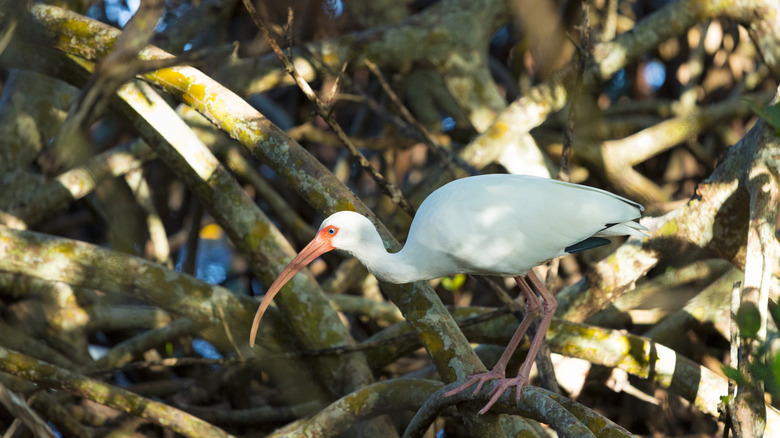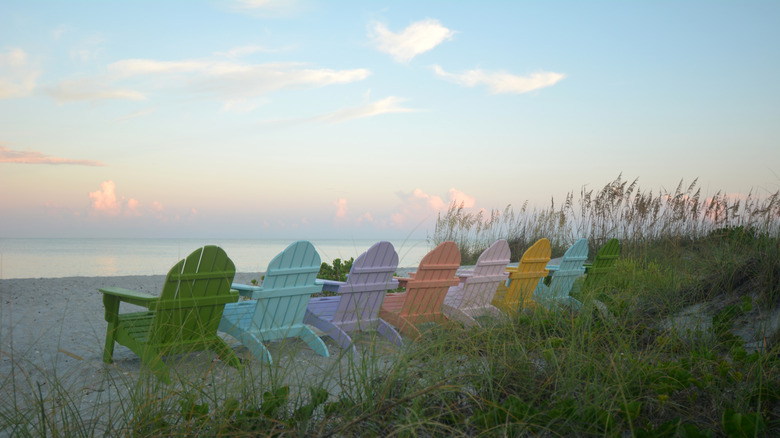Florida's Under-The-Radar Barrier Island Is A Pristine Gem To Kayak And Hike In Mangrove Forests
Just off Captiva Island's eastern shore, Buck Key Preserve waits behind a wall of mangroves. The 350-acre sanctuary is wonderfully isolated, making you feel as if you've slipped into a pocket of Old Florida not yet discovered by the modern world. Many visitors arrive by kayak, gliding through the calm Roosevelt Channel before slipping into the shaded tunnels that twist through the red and black mangroves. These passages are narrow and hushed, the kind of place where the sound of a paddle dipping into the water seems almost too loud.
Guided tours from Captiva, many of which depart from Tween Waters Inn, make the journey effortless for first-timers. The tides control the rhythm of the day; low water reveals oyster beds and deeper clearings, while high tide lets paddlers weave even farther inland. Wildlife thrives there, often appearing so suddenly it feels choreographed: manatees drifting beneath your kayak, dolphins feeding along the outer edges, herons stalking in the shallows, even otters who slip past in quick, playful streaks.
For travelers who crave a sense of exploration, Buck Key offers a world of tropical hardwood hammocks, salt marshes, and secluded pockets of higher ground. Though there are no formal hiking trails, paddlers often beach their kayaks to wander the uplands during favorable tides. The experience is quiet, unhurried, and deeply immersive, providing a rare chance to experience a wild Florida landscape without the press of crowds or the hum of nearby roads. If you're coming from Panama City Beach, consider sticking closer to home and hunting for conch and periwinkle shells at the quiet and aptly named Shell Island, just off the Emerald Coast.
History and ecology: a protected island with a past
Buck Key's solitude might suggest a place untouched by human history, but the island carries centuries of stories beneath its canopy. Archaeological work has revealed Indigenous burial sites dating back nearly a thousand years, indicating that the island once played a ceremonial role for early Native communities. Later, during the Seminole Wars and the Civil War, the hidden inlets around the key likely served as covert stopping points for small vessels navigating the Pine Island Sound.
In the late 19th century, the island's quiet chapter shifted when the Ormsby family settled on Buck Key. They planted citrus and tended small gardens, establishing a homestead that included a tiny school shared by families from Captiva and Sanibel. The settlement eventually faded, overtaken by the island's dense hardwoods and mangroves, but traces of this early community linger in the historical record and in subtle shifts in the land.
Buck Key's modern identity is defined by its ecological significance. Its mosaic of mangrove forests, seagrass beds, and tropical hammocks supports an astonishing range of species. The mangroves themselves provide essential nursery habitat for fish like snook, with their root systems stabilizing the surrounding waters and sheltering young marine life. Overhead, wading birds nest in high branches, while ospreys and pelicans hunt in the shallows. Conservation groups fought for decades to protect this rare landscape, culminating in the preserve's current stewardship under organizations committed to long-term ecological restoration. Today, the island stands as both a refuge for wildlife and a living reminder of the region's layered human story.
The practical side of paradise: where to eat and stay
Reaching Buck Key requires a short, scenic crossing from Captiva Island, usually by kayak or paddleboard. Launch sites and tour companies operate from marinas along the Roosevelt Channel, making access straightforward even for beginners. Travelers who prefer to explore on their own can simply drop into the water at their leisure, while those seeking a guided experience can join paddles departing from Tween Waters Inn. The voyage is short but atmospheric: a slow drift away from the bustle of Captiva toward the quiet silhouette of the preserve.
The vibrant landscape of Captiva and neighboring Sanibel offer ample places to stay, from the classic island charm of Tween Waters Island Resort & Spa to the more expansive, upscale setting of South Seas Resort. Vacation rentals are plentiful as well, giving visitors the option to settle into beachfront cottages or breezy island homes. After a day paddling through Buck Key's mangroves, travelers often head back to Captiva's village center, where restaurants spill soft light onto the sidewalks at dusk. Old Captiva House provides a refined take on coastal cuisine, while The Green Flash offers waterfront views and a relaxed island atmosphere. More casual spots, like R.C. Otter's or The Mucky Duck, welcome sandy feet and sun-worn kayakers looking for easy comfort after time on the water. If you prefer a barrier island with a bit more modern-day bustle, visit the white sand shores of Anna Maria Island.


